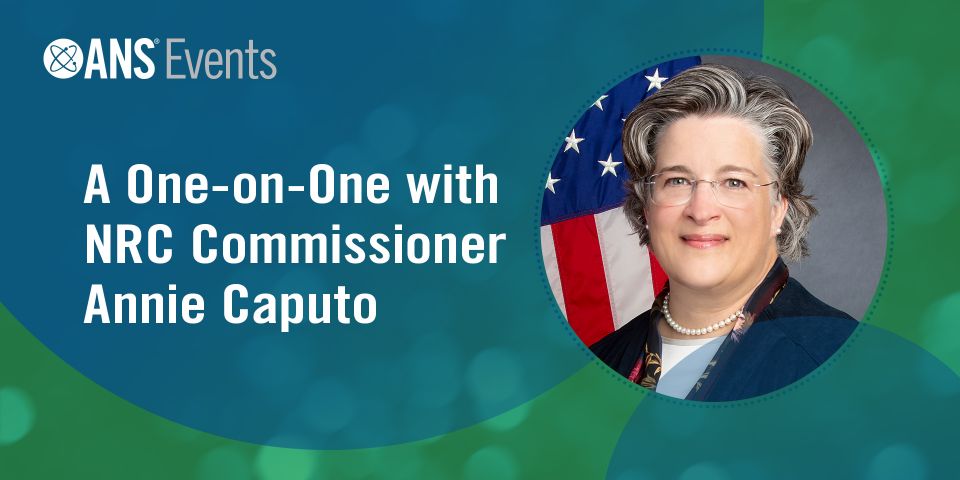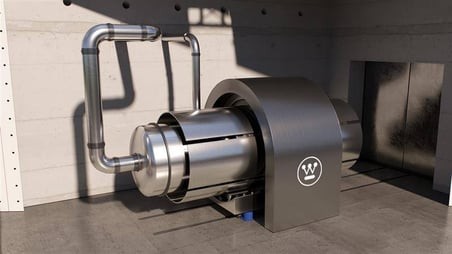A ‘fresh look’ at the mandatory hearing
Earlier this month, Nuclear Regulatory Commission chair Christopher T. Hanson sent a letter to the agency’s general counsel, Brooke P. Clark, saying “a fresh look at the mandatory hearing process is warranted.” Hanson directed the Office of the General Counsel (OGC) “to identify efficiencies in these mandatory hearings that will enable the commission to fulfill its statutory obligations while it promotes the responsible stewardship of time and resources,” and gave the office 60 days to provide a paper outlining applicable requirements and options.
The NRC is required by law to hold mandatory hearings, sometimes known as “uncontested” hearings, before granting a construction permit. A 1957 amendment to the Atomic Energy Act of 1954 requires NRC staff and the applicant to deliver presentations in a public meeting before the commissioners, who can ask questions intended to confirm whether the NRC staff’s safety and environmental findings are sufficient to support licensing. Preparing for and holding a mandatory hearing requires a significant amount of NRC staff time, yet the material presented in a mandatory hearing serves to summarize the work of the staff and applicant in the preceding months—work that included several previous public meetings and extensive documentation.
Times have changed: Unlike in 1957, when Congress passed the mandate and the United States had no commercial nuclear power reactors, there are now 93 operating reactors, and many more have been licensed, operated, and shut down in the intervening years.
Hanson acknowledges other significant changes in the past half-century in his directive to Clark: “The NRC's processes to enhance open and transparent regulation of nuclear power have also evolved over its history. The information landscape has drastically changed since the days of the AEC [Atomic Energy Commission], putting critical information about the NRC's decision-making into the public sphere,” he wrote. “Information that once required onerous in-person processes to acquire is now available instantaneously through the NRC's public website or its electronic records repository, known as the Agencywide Documents Access and Management System (ADAMS). Contact information for the Office of Public Affairs, project managers, and resident inspectors is readily available for use by the public to request additional information or ask questions.”
Finding flexibility: According to Hanson, “Over the past 20 years, the commission and the Licensing Boards have conducted 21 mandatory hearings.” Soon, the NRC could be handling many more license applications. “As the agency prepares for the potential increase in standardized reactor designs and applications for their deployment,” writes Hanson, “it is important to balance efficiency, clarity, and openness in commission decision-making and to reflect on lessons learned from the past uncontested hearings held on applications for early site permits, construction permits, combined licenses, and uranium enrichment facilities under our existing procedures.”
While Congress could remove the requirement for mandatory hearings in the future, the NRC must prepare to license new reactors now, and Hanson is asking the OGC for advice on how those mandatory hearings could be conducted. As Hanson writes, “While the NRC is bound by statute to conduct mandatory hearings for certain applications, Congress did not provide direction as to how those hearings are conducted. Indeed, the commission has previously considered questions regarding the format and structure of these hearings over the years. Flexibility in the statute allows the agency to adjust its processes to meet emerging needs.”
Recognizing that applications for non–light water reactors would differ from the power reactors that the NRC has licensed to date, Hanson specifies that “In its analysis, OGC should consider whether procedures for mandatory hearings can, or should, differ for applications that represent a ‘first of a kind’ review.”
Origin and impact: A paper published in November 2023 by the Center on Global Energy Policy (CGEP) at Columbia University titled “Improving the Efficiency of NRC Power Reactor Licensing: The 1957 Mandatory Hearing Reconsidered,” discusses the origin of mandatory hearings, in which the Fermi-1 reactor, a fast breeder reactor built in Michigan, played an outsized role. The paper was prepared by Matt Bowen, a senior research scholar at CGEP; Rama T. Ponangi, a research associate at CGEP; and Stephen G. Burns, who served as an NRC commissioner, including two years as NRC chair, from 2014 to 2019.
The authors describe the AEC’s oversight of Fermi-1 in the mid-1950s and conclude that “the AEC’s handling of the PRDC Fermi-1 reactor licensing—including issuing a provisional construction permit despite expressed concerns from the [Advisory Committee on Reactor Safeguards] as well as withholding information from Congress and the state of Michigan related to safety—undoubtedly played a role in Congress’s legislative response to force the AEC to be more transparent with the public by creating the mandatory hearing and requiring ACRS reports be made public.”
In their paper, Bowen, Ponangi, and Burns emphasize the burden of time and money devoted to mandatory hearings more than six decades after they were written into law. They review the context and conduct of the December 2017 mandatory hearing on Turkey Point-6 and -7—the most recently issued power reactor combined license—before describing past legislative proposals to eliminate the mandatory hearing “as a starting point for discussions today.”
In the case of Turkey Point-6 and -7, “that application was the fifth AP1000 project to be licensed, though the review still involved 89,000 NRC staff hours. It involved a commission-certified AP1000 design whose certification had, of course, also been reviewed and approved by the NRC staff and the ACRS, and all three entities had reviewed and approved the previous four AP1000 COLAs [combined license applications]. By the time the mandatory hearing for the fifth project occurred, there was little new ground for the NRC to cover in the fifth AP1000-related mandatory hearing.”
Redundant mandatory hearings would be even more abundant if several smaller reactors were proposed to provide the same power as two or three Generation III LWRs. As a case in point, the authors discuss the implications of new reactor construction by the Tennessee Valley Authority, and state that “the utility has publicly mused about the possibility of building 20 reactors in the coming decades. If TVA were to move forward with building 20 BWRX-300s and the utility submitted a [10 CFR] Part 50 or Part 52 license application for each one, that would mean 20 mandatory hearings for the same reactor design, built by the same utility, in the same region of the United States.”





